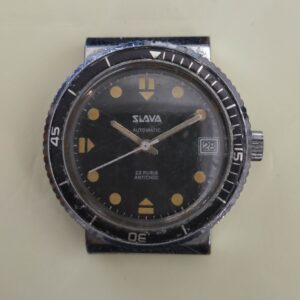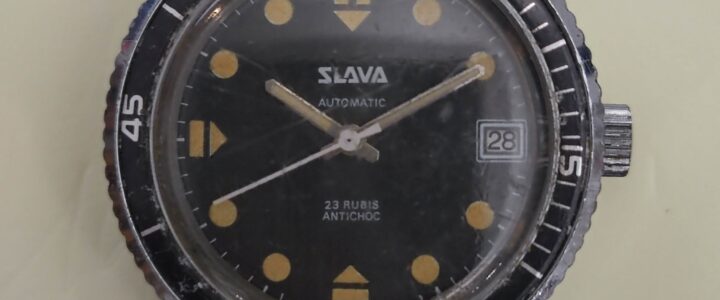Introduction
The history of Soviet watchmaking is enriched by fascinating episodes of international cooperation. A significant example is the French branch of SLAVA, located in Besançon. This branch, established to facilitate Soviet industrial activities in the West, played a crucial role in the production of high-quality watches.

Origins and Historical Context
Besançon, known for its long tradition of watchmaking, hosted the SLAVA branch at number 7 rue Auguste Jouchoux, right next to the famous Lip company. The choice of this location was not accidental: the city not only had a strong tradition in the sector but also historical ties with the USSR. In fact, collaborations between Lip and the Soviets in the 1930s laid the foundations for the post-war revival of Soviet watchmaking.
Production and Innovation
The French branch of SLAVA began producing gold-plated cases as early as the late 1960s. This strategy allowed the Soviets to leverage local expertise to create high-quality products for the European market. The factory also produced and marketed various models under the Raketa brand. The dials of these Soviet-Besançon watches bore the inscription « механизм cccp » (« USSR mechanism »), distinguishing them from those produced in the USSR.
The SLAVA Besançon supply catalogue, probably dated to the late 1960s, lists spare parts for Chaika, Zaria, Slava, Molnia, and Poljot movements. This document is a valuable testimony to the diversification and quality of SLAVA’s production in France.
Expansion and Development
Slava Besançon also registered the trademarks Diamant, Diamant de Luxe, and Saintis, under which it marketed watches entirely made in the USSR. Initially, Slava was located in place Saint-Pierre, the headquarters of S.I.C.E.H., then in place du Jura. The first factory was installed in rue Henri Baigue, but in 1975 Slava built a new factory in rue Auguste Jouchoux. The industrial park still bears the name Slava today.
By the early 1980s, the factory employed 70 people for assembly, quality control, and after-sales service. Soviet mechanical movements were gradually replaced by quartz movements, all supplied by France-Ébauches. The company also marketed, in the last years of the USSR, the Big Zero and Rising Sun models, classics marked “Made in USSR”. It is unclear whether these watches were imported, assembled from Soviet parts, or assembled with a Soviet mechanism and a Besançon case.
Changes and Decline
In 1983, the Soviet board of directors (Mashpriborintorg representatives) of Slava parted ways first with its Besançon director, Bernard Le Varlet, then with Maurice Carruzzo a few months later. Dismissed for “technical reasons”, Maurice Carruzzo distributed leaflets through his wife at the factory gates on 16 August.
One possible explanation is that he had brought Slava closer to Lip and France-Ébauches, sourcing quartz mechanisms from them and thus creating 100% French watches, which probably was not in the Soviets’ interest.
Slava Precision: New Directions
On 15 January 1990, the joint-stock company Slava-Précision was founded, taking over Slava’s assets. It was led by M. Aubach, already active in the para-watchmaking industry (Interstrap and Watch Design companies), with the Russian supervisory board president, M. Korolev. The company continued its watchmaking activities in the same building on rue Jouchoux, importing from Russia and Hong Kong, and exporting to Canada, Switzerland, and Italy, but moving its optical activities to the Paris region.
Slava Précision still employed 24 people in 2004 but went into judicial liquidation on 12 June 2006 (the procedure was closed in 2009).
Union of Expertise and Tradition
The watches assembled in Besançon used movements produced in the USSR, such as the 2602 movement from 2MChZ. These watches bore the inscription “RUSSIAN MOVEMENT” on the dials, testifying to the Soviet origin of their components. This production avoided the commercial constraints that would have made the use of the “Made in USSR” label problematic in Europe.
Conclusion
The SLAVA branch in Besançon represents a fascinating example of industrial cooperation between the USSR and Western Europe. This story not only enriches the narrative of Soviet watchmaking but also demonstrates how the union of different skills can lead to the creation of exceptional products.



